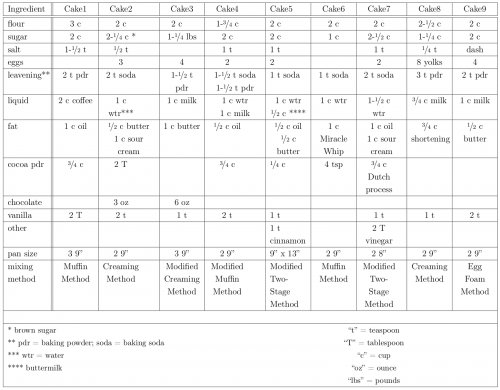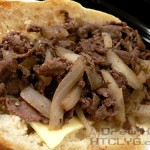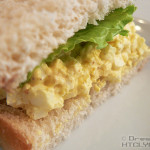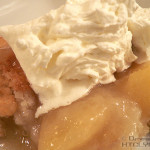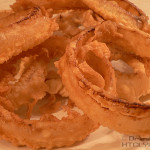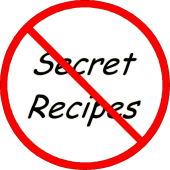Have you ever had someone completely exceed your expectations? Jenni, the Online Pastry Chef just did. I asked your for your favorite “can’t miss” birthday cake recipes, and posted the responses. Then I asked Jenni, “Hey, could you take a look at these and tell me how they would be different?”
She must really like analyzing recipes, because what I got back was amazing.
You can click the chart above to see the full-size version of it. Then you’ve got to go look at the analysis on Jenni’s site. Random selections:
The cakes that do not contain eggs use a lot of liquid fat — Cake 1 uses 1 cup of oil, and Cake 6 uses 1 cup of Miracle Whip (basically oil and a little egg and sugar). Eggs are good for binding and tenderizing, so upping the fat ups the tenderness.
…
The deal with acidic ingredients is that you want a batter to be neutral in pH or only very slightly acidic in order for the batter to set up properly. If the pH is too high — the batter is too “basic”, or alkaline — the cake will never set up, and you’ll just end up with hot pudding.
…
If this cake bakes up how I think it will, just based on its ingredients, it looks like it would be ridiculously overleavened and then collapse in a heap.
…
Oh, if your batter is too alkaline, it will taste like soap. Trust me; this is not a Desired Flavor in a Baked Good.
When I asked what she thought, I was expecting something like, “Oh, the first one will be really rich, and the fourth one light and fluffy.” Jenni seriously over-delivered. Go check out the rest of it even if you’re not looking for a cake recipe just now. It’s interesting to see how a pro reads a recipe.
